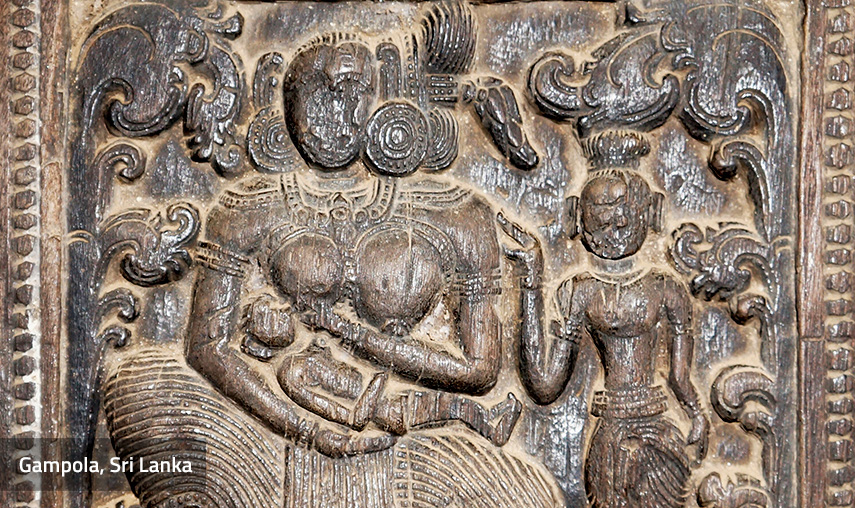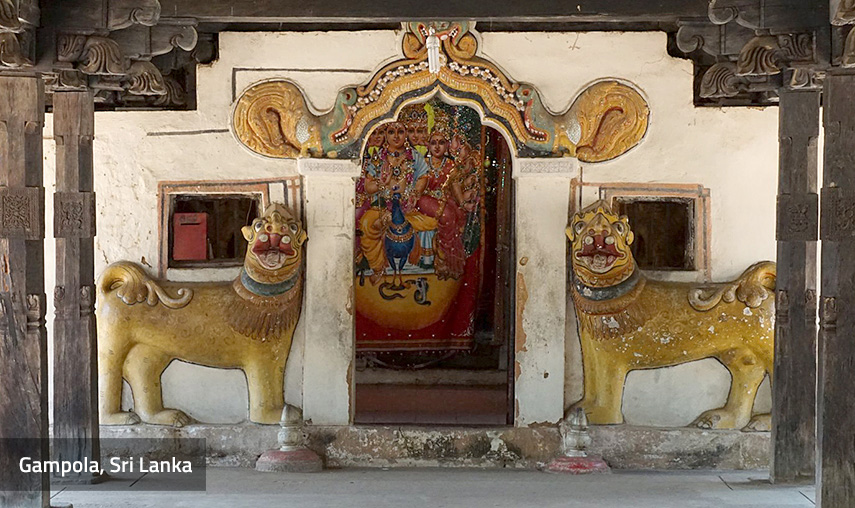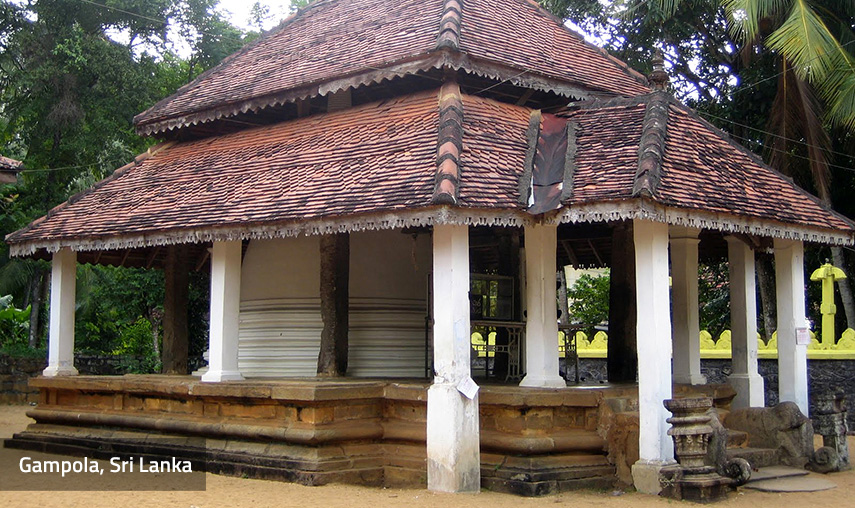Gampola Sri Lanka
Gampola is steeped in the turbulent history of Sri Lanka’s ancient kings after the introduction of Buddhism, and the increasing influence of Hindus from southern India.
The now bustling modern central highlands metropolis, which in the 14th Century was Sri Lanka’s capital city, is dominated by Ambuluwawa mountain, atop which is the landmark Biodiversity Complex. Its amazing white stupa-like tower, with its external spiral staircase narrowing to a point often lost in low cloud, can be seen for miles around and affords fantastic views of the surrounding countryside.
The ancient kingdom of Gampola dominated large swathes of central, southern and south-western Serendib, the ancient Arabic name for Sri Lanka. What is known as the ‘Gampola period’ began with the building of Lankatilaka and Gadaladeniya viharas, two sacred temples created to underline the city’s growing influence and importance.
Crucially, they were the first Buddhist monuments that integrated Hindu deities and made them a part of Buddha worship, at the same time contributing to the development of cross-cultural art and literature, both poetry and prose. Though the kings of Gampola were not powerful warriors, they had a high calibre for art and culture and have made significant contributions to art. As well as water parks, herb gardens and a proliferation of rare and wonderful flowering and medicinal plants, the Biodiversity Complex includes an International Conference Hall much favored by groups seeking a convenient and colorful alternative to Colombo.
 Toggle Navigation
Toggle Navigation
















